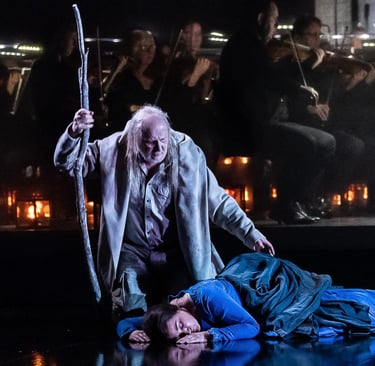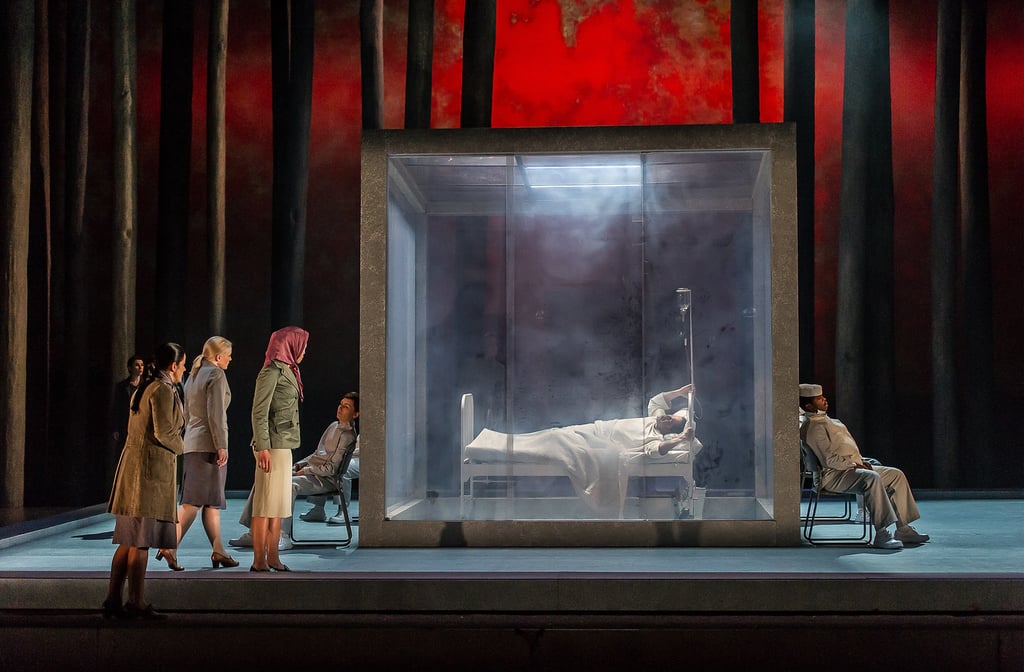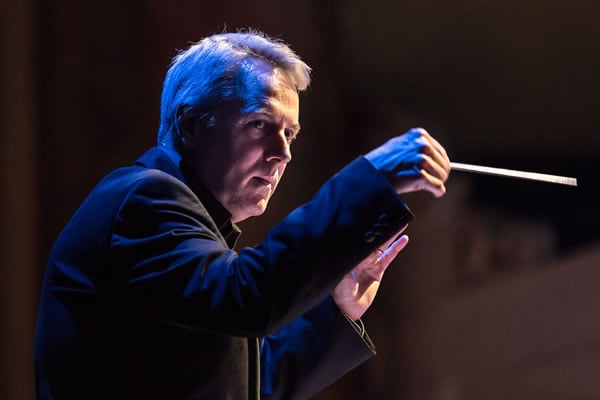Parsifal
Wagner’s final opera or "Bühnenweihfestspiel" (stage consecration festival drama), contrasts sacred with sensual, stark magnificence with almost unearthly beauty
5 min read


Introduction
Parsifal, Wagner’s final opera, was first given at Bayreuth in 1882. For many years, at the insistence of Wagner and then his widow Cosima, performances outside the Bayreuth Festival were banned. This embargo was lifted in January 1914; by August of the same year Parsifal had been performed at more than fifty opera houses throughout Europe.
Loosely based on scenes from Wolfram von Eschenbach’s medieval romance Parzifal. The score contrasts the sacred with the sensual, from the stark magnificence of the music for the procession to the Grail Hall in Act I to the richly orchestrated scene in which Kundry attempts to seduce Parsifal in Act II. There are sections of almost unearthly beauty such as the Act I Prologue, the Good Friday music in Act III, and the closing scene of the opera, in which Parsifal reveals the Grail to the knights.
Wagner did not call his last great work Parsifal an opera. He described it as a “stage consecration festival drama” (in one economical German word, Bühnenweihfestspiel), to highlight the extraordinary nature of its semi-religious narrative, as the “holy fool” Parsifal brings redemption to the oppressed Knights of the Grail and their tortured leaders by restoring the spear that has wounded their leader Amfortas and revealing the chalice of the Grail.
Wagner uses myth and legend to deal with timeless questions of innocence, temptation, guilt and how we use ritual to try and make sense of the world around us. Parsifal is the ‘pure fool’ who through compassion becomes wise. This unlikely hero helps us reflect on what it is to be human.
Brindley Sherratt as Gurnemanz and Katarina Karneus as Kundry in Opera North’s semi-staged Parsifal


Royal Opera House
Several years ago, I experienced a performance of Parsifal from the Royal Opera House relayed live to the cinema. The creative team, director Stephen Langridge and designer Alison Chitty, emphasised the suffering of Amfortas with a hospital bed centre stage. Visually very different from the medieval Grail Knights typically associated with Arthurian legend. This ROH performance was so electrifying that I was completely absorbed by it, long after it had finished.


Opera North
Nottingham Royal Concert Hall, Wed 15th June 2022
We nearly didn't get to see this. I was feeling rough and wasn't sure I could manage the drive to Nottingham. But Shelagh was encouraging ("it's only 5 hours") and the very happy memories of Opera North's Ring Cycle under the baton of Richard Farnes, persuaded us to go anyway. And it was an experience not to be missed. An absolutely superb and very memorable performance.
The critics were full of praise.
"Don't miss your chance to see Opera North's Parsifal ... dramatically thought-provoking, musically enveloping experience ... grips from start to finish" (The Telegraph)
"Opera North's wonderful orchestra take centre stage in Wagner's epic" (The Times)
"...the shimmering poetry of the score is wonderfully conveyed" (The Guardian)
One thing that puzzled us was the number of empty seats for Acts 2 and 3. It appeared as if people were prepared to spend £50 a seat, but not stay to the end. Shelagh struggled with the first act (only good in parts), but she had never seen or heard Parsifal before and had no idea what was coming. She enjoyed Act 2 the most, with its struggle between Parsifal and the forces of evil ranged against him.
Opera North’s Wagner journey, which began with the Ring cycle it presented between 2011 and 2014, continued with his final music drama. Richard Farnes, well known as the perfect Wagnerite, was Opera North's music director for the Ring Cycle and returned to conduct Parsifal.
The performance we saw had no staging. But at Leeds there was blood everywhere: the wound that the Grail leader Amfortas (the magnificently tortured Robert Hayward) has sustained is the chief symbol of the pain and suffering that he and his Knights endure. In a chilling reinvention of the ritual ceremony at the end of Act One, with choruses around the theatre, the Knights dip their hands into his open wound, smearing their faces. The young innocent Parsifal (Toby Spence), already blooded from his thoughtless killing of a swan, uses the ritual to place a hand movingly on Amfortas’s head. His mission of redemption is set.
The singers take a while to warm up, but while the first act is restrained, the second act in the garden of the magician Klingsor brings both the voluptuousness of flowermaidens trying to charm Parsifal, and the fury of the wandering Kundry (Katarina Karnéus) as Parsifal rejects her pleading advances. Here, the vivid Karnéus and Spence are at full throttle; Spence, like most singers here new to his role, sounds light for the part, but – as we know from his Gerontius in Elgar’s oratorio – can surprise with the force of his passion at the top of his range. Toby Spence’s Parsifal may not be the most heroic ever heard, he is interestingly self-aware, visibly bothered by what he does not understand of the grail ritual. Katarina Karnéus as Kundry was one of the best performed roles.
The heavy burden of narration falls on the old Knight Gurnemanz, and here the superb Brindley Sherratt dominates. Every word of his first-act narration is crystal-clear and compelling. And he comes into his own when we reach act three: the sustained power of his recognition of Parsifal when he returns is overwhelming. "Bass voices take time to ripen: his is at its best" (Fiona Maddocks).
Robert Hayward is an anguished Amfortas and Derek Welton is an implacable Klingsor; his performance was superb, wonderfully expressive, conveyed the evil of the character.
Opera North’s orchestra took centre stage. One of the greatest glories of Wagner’s score is its extraordinary orchestral writing and Farnes’ control and shaping of four hours of music is as sure as ever. His tempi may sometimes seem rather brisk, and there is perhaps more intense beauty to be wrung out of the third-act prelude than there was here, but in general the shimmering poetry of the score is wonderfully conveyed. The gloriously sonorous yet subtle sounds that Farnes drew from his onstage players was magnificent; launching the huge score into flight and keeping it endlessly aloft. Musically, the performance, built on the foundation of Farnes and the orchestra, never puts a foot wrong. The percussion section includes an instrument designed to sound like church bells. This is often a piano frame with 4 strings, known as a Parsifal bell. And the wall of sound that conveyed the destruction of Klingsor's castle was awesome (including the thunder machine).
For those prepared to spend five hours in the theatre, I cannot recommend highly enough this dramatically thought-provoking, musically enveloping experience, offering a vivid human metaphor for today of hope won through bitter suffering. The glory of Wagner’s score shines through and stays imprinted for days after. The contrast between the pain at the beginning and the sheer transcendant bliss expressed by the music at its climax is thrilling. As always with Wagner, the drama, the libretto are mere signposts to the real action which is the music. One may struggle with a medieval Christian worldview and patently absurd storyline, but if that is all you see, then you miss a sublime experience.